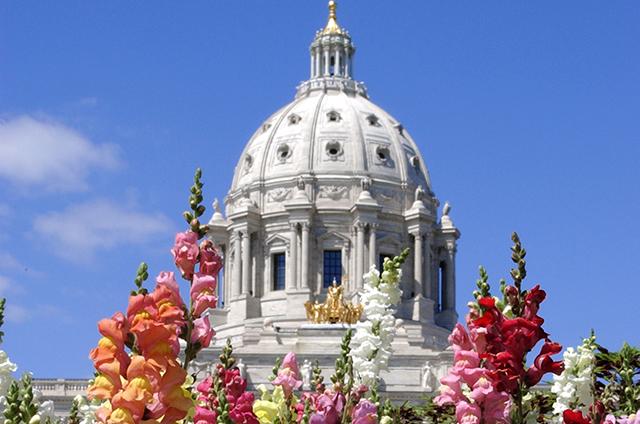
Photo Credit: MinnPost
The Minnesota Legislature gavels into session today. They face a short 11 weeks to tackle significant policy priorities before they must adjourn on May 23rd. The big news is that the Legislature has a surplus of $900 million, lower than last year’s originally projected $1.2 billion. Legislative leaders and the Governor have been taking positions regarding a variety of uses of those funds, though planned tax and transportation bills could consume much, if not all, of that surplus squeezing out other proposed spending.
And this will all play out against the backdrop of elections that are less than a year away that will see each of the state’s 201 legislative seats in the House and Senate up for grabs. Read on for highlights on key issues. Be sure to check back on our blog page for continuing updates throughout the legislative session.
Also, be sure to register to participate in this year’s Greater Mankato at the Capitol on March 30. This event will be a great opportunity to help raise our community’s visibility with state leaders and get engaged on issues that are important to you and your business.
Capitol Construction
While not a policy issue, the Capitol is in the final year of a three-year restoration and its impact will be felt this session. The Capitol is closed except for the House Chamber, which is only open to members and limited public access. The new Senate Office Building will serve as the Senate’s temporary chambers.
Taxes
The legislature did not reach consensus on a tax bill last year, ending with 182 different tax-cut proposals on the table contained in a republican tax cut plan totaling $2 billion and a DFL plan of about $500 million. While the appetite for tax cuts has waned somewhat due to the downward surplus forecast, there will still be an effort to achieve some tax relief. The question will be for who. There is bipartisan agreement that relief should focus on middle-class taxpayers. For instance, tax relief for college students with student loans and child care credits have been proposed by both parties. Beyond that, there is little agreement.
On the business tax front, both parties have discussed reducing the State’s Business Property Tax, but there isn’t consensus yet on how much or in what way to do so.
Transportation
Both parties agree that it will be important for the legislature to pass a transportation finance bill this session, though there still is not agreement yet on what that should look like with Republicans rejecting tax increases and the DFL saying the Republican plan doesn’t do enough. Republicans have proposed a $7 billion bill over 10 years that rather than raising taxes, reallocates general funds to transportation and relies on bonding and surplus money. The DFL plan would raise $11 billion over the next decade by enacting a new wholesale gas tax of 6.5% and an increase in tab fees. The bill also includes a metro sales tax for transit that is not contained in the Republican bill.
Bonding
The Legislature faces a nearly $4 billion list of requests for state spending on infrastructure projects including everything from water quality to university buildings. While the Governor proposed a bonding bill of $1.4 billion (which contained funding for projects at both South Central College and Minnesota State University, Mankato), that will likely be paired to $1 billion or less by the Legislature. Governor Dayton has also proposed spending $167 million for local water projects. The bill also needs a 3/5 majority to pass, so it must be bipartisan.
Other Issues
- Broadband – Governor Dayton proposed investing $100 million into broadband expansion for Greater Minnesota, though it’s unclear whether Republicans will agree to spend that much.
- Early Childhood – Governor Dayton has proposed state funding for universal 4-year-old preschool delivered by the public schools. Republicans and others have instead favored expanding existing preschool scholarship programs.
- Iron Range – The Governor and Legislators want to pass a measure to extend unemployment benefits for laid-off iron workers.
- REAL ID – The Legislature will take up a measure that would enable the state to bring its drivers licenses into compliance with the federal REAL ID Act, which would ensure Minnesotan’s could continue to board Airplanes and access federal building with their drivers license.
- Racial Disparities – Legislators are working on a menu of options that would improve economic opportunities for minorities, though it’s unclear what those policies will be.
- Other things to watch – The Legislature may also take up a bevy of other issues including: A new St. Paul soccer stadium, legalizing big fireworks, Sunday liquor store sales, changes in drug sentencing, police body cameras, replacing Minnesota’s presidential caucus with a primary, and paid family leave for workers.




